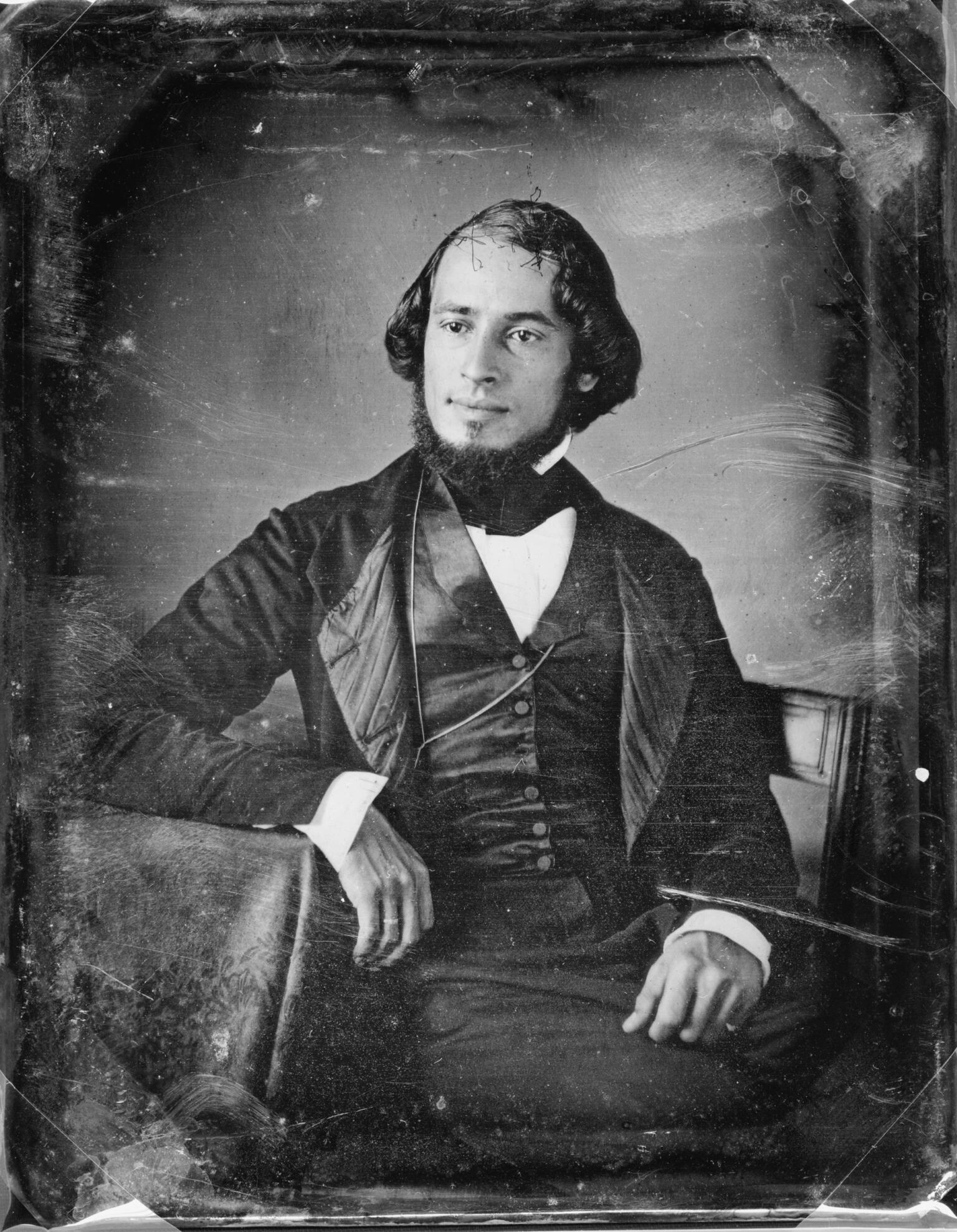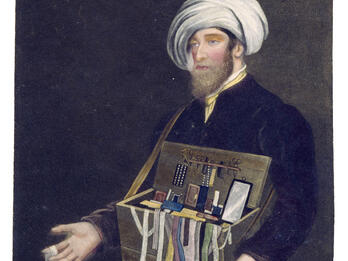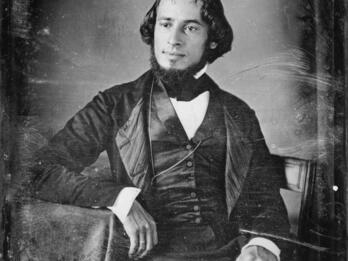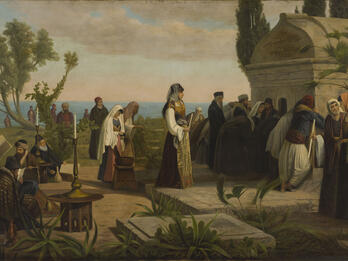Self-Portrait
Solomon Nunes Carvalho
ca. 1850

Creator Bio
Solomon Nunes Carvalho
Solomon Nunes Carvalho, the son of a prominent Sephardic family in Charleston, South Carolina, had a career as both a painter and a photographer. While he was a distinguished portraitist, he also painted other subjects including his childhood synagogue, Kahal Kadosh Beth Elohim. In the 1840s, Carvalho made daguerreotypes, and in 1853 and 1854, he accompanied General John C. Fremont as the official photographer for an expedition through the territories of Kansas, Colorado, and Utah. Carvalho subsequently had studios in New York, Philadelphia, Baltimore, and Charleston and was active in the Jewish communities of those cities.
Related Guide
Literature and Modernity
Jewish writing in the period spanning 1750–1880 reflects the profound changes that confronted Jews in modernity. Some writers self-consciously broke with traditional and religious models; others definitely embraced it.
Related Guide
Travel Writing
The proliferation of the press and travel by steamship (and toward the end of the period, railroad) brought descriptions of far-flung parts of the world and reports about Jews living in them from one corner of the globe to another.
Places:
You may also like

Moroccan Peddler in London
Private Journal of a Visit to Egypt and Palestine
Epistle of Israel’s Deliverance

Travel Journal

Ma’agal tov ha-shalem (The Good Journey)



